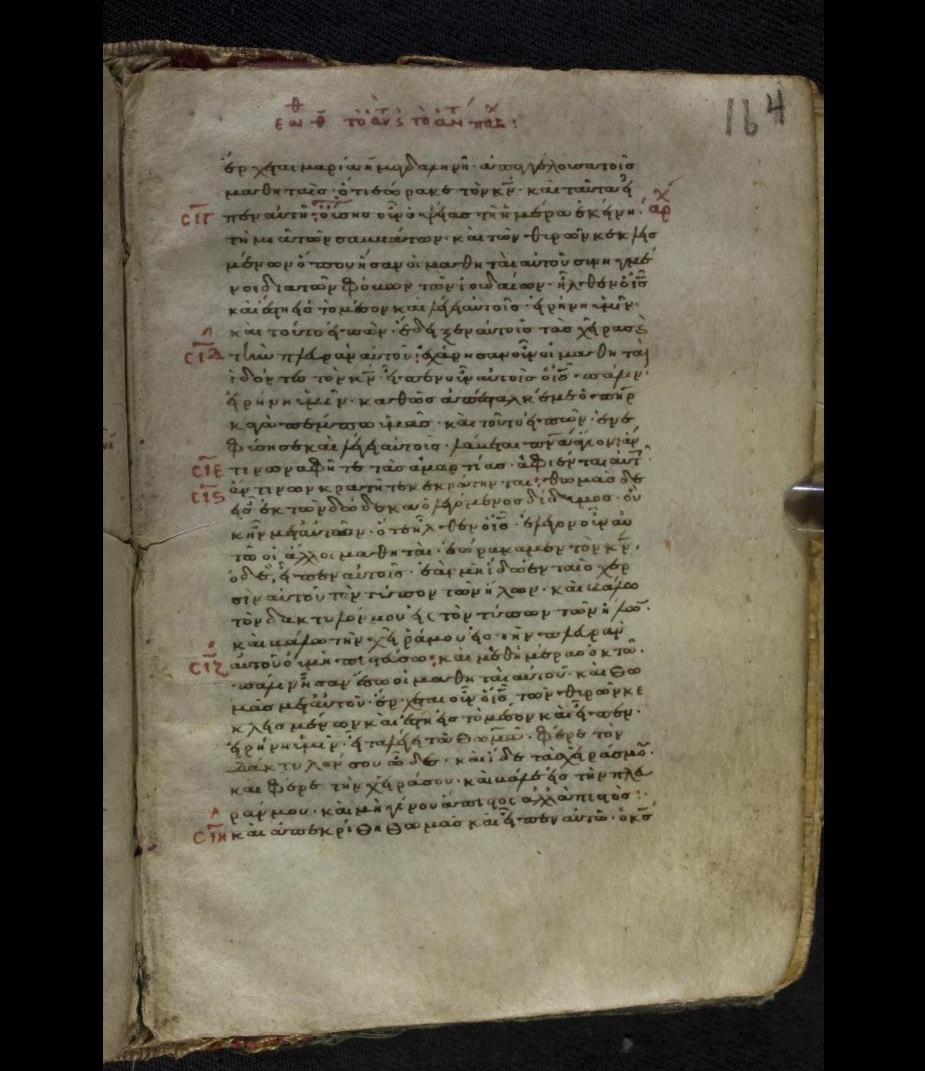“The Incredulity of Thomas.” An Icon by Theodore Poulakis

On the occasion of Easter and recent concerns about social distancing, we are presenting an icon whose subject focuses on the crucial importance of touch and faith. The icon represents the story of the Incredulity of Thomas and is a gift of Helen Stathatos to the Gennadius Library.
A typical example of a religious painting of the Ionian School in the second half of the 17th century, the icon is painted on wood and measures 0.75 x 0.575 cm. At the bottom we can clearly see the signature of the artist in Greek: ΧΕΙΡ ΘΕΟΔΩΡΟΥ ΠΟΥΛΑΚΗ (by the hand of Theodore Poulakis). This prolific icon painter was born in the city of Chania, Crete around 1620, he spent thirteen years in Venice (1644-1657), and had a brilliant painting career in Corfu, where he died in 1692.
The icon renders the event in a direct way following traditional Byzantine iconography and style. Jesus stands in front of the closed door of a large domed building, with his right arm raised; we can see the signs of the nails on his hands. He holds a scroll in his left hand. The Apostles, divided in two groups, watch Thomas touch Christ’s side pierced by the lance.
On the Sunday after the resurrection Jesus’ disciples were gathered when their teacher showed up. One of the Apostles, Thomas, was not present to witness it. When the other disciples recounted the event, Thomas balked: “Unless I see the mark of the nails in his hands, and put my finger in the mark of the nails and my hand in his side, I will not believe” (John 20: 25).
A week later the disciples had again gathered all together in the house, only this time Thomas was with them. The doors were shut and Jesus appeared a second time. Then he invited Thomas to reach out with his hand to his hands and his side to feel the wound urging him to stop doubting and to believe. Thomas said to him, “My Lord and my God!” Then Jesus told him, “Because you have seen me, you have believed; blessed are those who have not seen and yet have believed” (John 20: 27-29).
Jesus’ second apparition to the Apostles had as an objective to cast out fear and doubt about the truth of the miracle of the resurrection. Although Jesus asserts the superiority of those who have faith without physical evidence, he was nonetheless willing to show Thomas his wound, and let him feel it. The theological interpretation of the episode has concentrated on it as a demonstration of the reality of the resurrection, but later it was also seen as an allegory of the sacrament of the Eucharist.
Our icon puts emphasis on the closed door, a significant part of the narrative [“the doors being shut"]. After the arrest of Christ the disciples tried to hide from the Jewish authorities out of fear. They returned to the last place where they had seen Jesus alive, the upper room around the same table where they had shared that last meal.
The second point that is stressed in the painting and in the gospels is the extended arm of Thomas who thrusts his hand into the wounds on the body of Christ: “Then saith he to Thomas, Reach hither thy finger, and behold my hands; and reach hither thy hand, and thrust [it] into my side: and be not faithless, but believing” (John 20: 27). See the relevant folio from the manuscript gospel of 1226 from Caesarea in the region of Cappadocia (MSS 1.5, gift of Helen Stathatos to the Gennadius Library).
